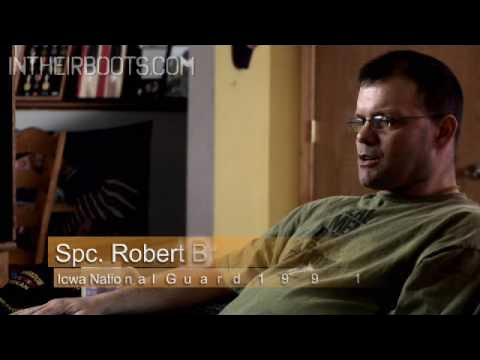Bringing Visibility to Invisible Disabilities | Awareness and Education | #support
Summary
TLDRThe Invisible Disabilities Association (IDA) was founded by Wayne and Sherri Connell to educate, encourage, and connect those affected by invisible disabilities worldwide. The script shares personal stories of individuals with conditions like multiple sclerosis, brain injuries, and rare heart conditions, highlighting the challenges of living with unseen illnesses and the societal misconceptions that can lead to isolation. The IDA aims to raise awareness, provide support, and create a community where people can share their experiences and find understanding, emphasizing the importance of believing and supporting those with invisible disabilities.
Takeaways
- 😔 People often doubt the existence of disabilities that aren't visibly apparent, leading to disbelief and isolation for those affected.
- 🌟 Wayne and Sherri Connell established the Invisible Disabilities Association (IDA) to educate, encourage, and connect individuals with invisible disabilities worldwide.
- 🌱 IDA addresses societal issues beyond specific diseases, focusing on the perceptions and misconceptions surrounding invisible disabilities.
- 👥 Everyone has a personal story or knows someone with an invisible disability, emphasizing the widespread impact of these conditions.
- 🚫 The lack of visible symptoms can lead to insensitive comments like 'you don't look sick,' which can be hurtful and invalidating.
- 🎶 Pete Ohlin's music and his daughter's rare heart condition exemplify how invisible disabilities can affect anyone, even those who advocate for awareness.
- 👁 Cassandra Perkins' experience with hemi-blindness highlights the challenges of living with an invisible disability and the impact of others' misunderstandings.
- 🧠 Living with a brain injury can be particularly isolating, as it affects daily functions and memory, often going unnoticed by others.
- 🗣️ The IDA provides a platform for individuals to share their stories, fostering a sense of community and support among those with invisible disabilities.
- 💪 The association aims to show the public the perseverance and strength of those living with invisible disabilities, advocating for understanding and acceptance.
- 🌐 By visiting InvisibleNoMore.com, people can join the movement to create a more inclusive and understanding world for those with invisible disabilities.
Q & A
What is the main issue addressed by the Invisible Disabilities Association?
-The Invisible Disabilities Association addresses the disbelief, prejudice, isolation, and loneliness faced by individuals with disabilities that are not visibly apparent.
Why did Wayne and Sherri Connell establish the Invisible Disabilities Association?
-Wayne and Sherri Connell founded the Invisible Disabilities Association to provide education, encouragement, and connection to those affected by illness, pain, and disability, aiming to treat societal misconceptions about invisible disabilities.
What kind of disabilities does the Invisible Disabilities Association focus on?
-The association focuses on invisible disabilities, which are conditions that affect a person's daily life but are not immediately apparent to others, such as multiple sclerosis, brain injuries, and rare heart conditions.
What was Sherri Connell's personal experience with disability before founding the association?
-Sherri Connell had bouts with paralysis and was eventually diagnosed with multiple sclerosis at 27 years old, which led to her being paralyzed from the ribs down.
How does Pete Ohlin relate to the cause of invisible disabilities?
-Pete Ohlin's interest in invisible disabilities was initially through his music, which he believed could help others struggling with such conditions. His personal connection deepened when his daughter was diagnosed with a rare heart condition.
What challenges does Cassandra Perkins face due to her invisible disability?
-Cassandra Perkins, who has hemi-blindness, faces challenges such as people not believing her condition and making fun of her, as well as difficulties in performing daily tasks like showering and washing her hair.
What is the common misconception that people with invisible disabilities often encounter?
-A common misconception is that if someone 'looks fine,' they must not have a disability or be in pain, leading to disbelief and lack of understanding from others.
How does the Invisible Disabilities Association aim to support individuals with invisible disabilities?
-The association aims to support individuals by providing a platform for sharing stories, offering a safe place to discuss their experiences, and educating others on how to understand and help those with invisible disabilities.
What is the significance of the phrase 'Invisible No More' mentioned in the script?
-The phrase 'Invisible No More' signifies the goal of the Invisible Disabilities Association to raise awareness and recognition of invisible disabilities, ensuring that those living with them are seen, understood, and supported.
What steps can people take to learn more or get involved with the Invisible Disabilities Association?
-People can visit the website InvisibleNoMore.com to learn more, share their stories, and join the association in its mission to support and advocate for individuals with invisible disabilities.
How does the association help caregivers and friends of those with invisible disabilities?
-The Invisible Disabilities Association helps caregivers and friends by providing guidance on how to support and communicate effectively with individuals living with invisible disabilities, as well as resources to understand their challenges.
Outlines

This section is available to paid users only. Please upgrade to access this part.
Upgrade NowMindmap

This section is available to paid users only. Please upgrade to access this part.
Upgrade NowKeywords

This section is available to paid users only. Please upgrade to access this part.
Upgrade NowHighlights

This section is available to paid users only. Please upgrade to access this part.
Upgrade NowTranscripts

This section is available to paid users only. Please upgrade to access this part.
Upgrade NowBrowse More Related Video

Traumatic Brain Injury - A documentary on soldiers and veterans (Pt. 1)

Break the Barriers 2014 Promotional Video

Talk to Me: Treating People with Intellectual Disabilities with Respect

The Game Changer

From invisible to visible | Maria Hinojosa | TEDxPennsylvaniaAvenue

Why Habit Hacks don't work! ADHD / Autism Version
5.0 / 5 (0 votes)